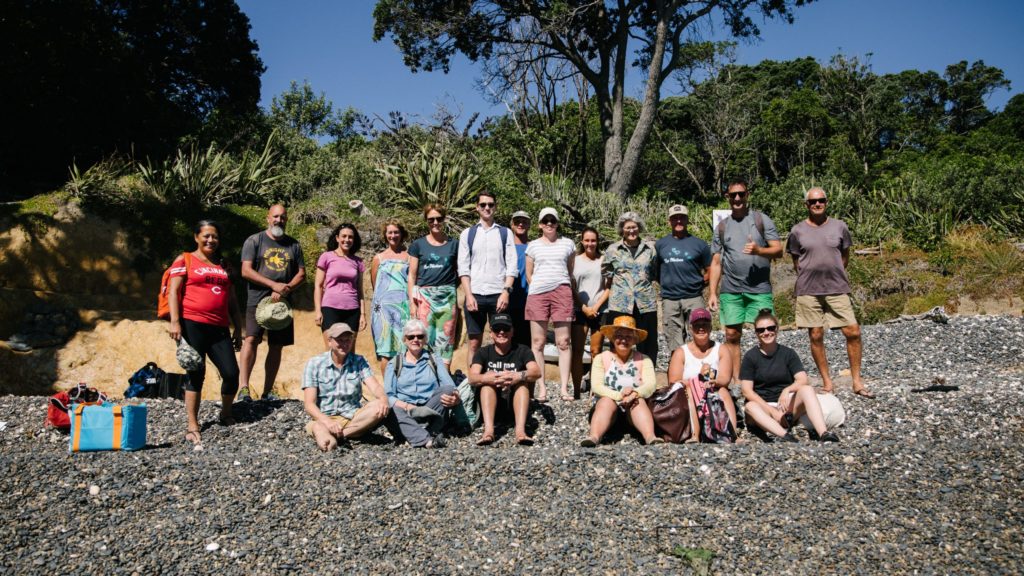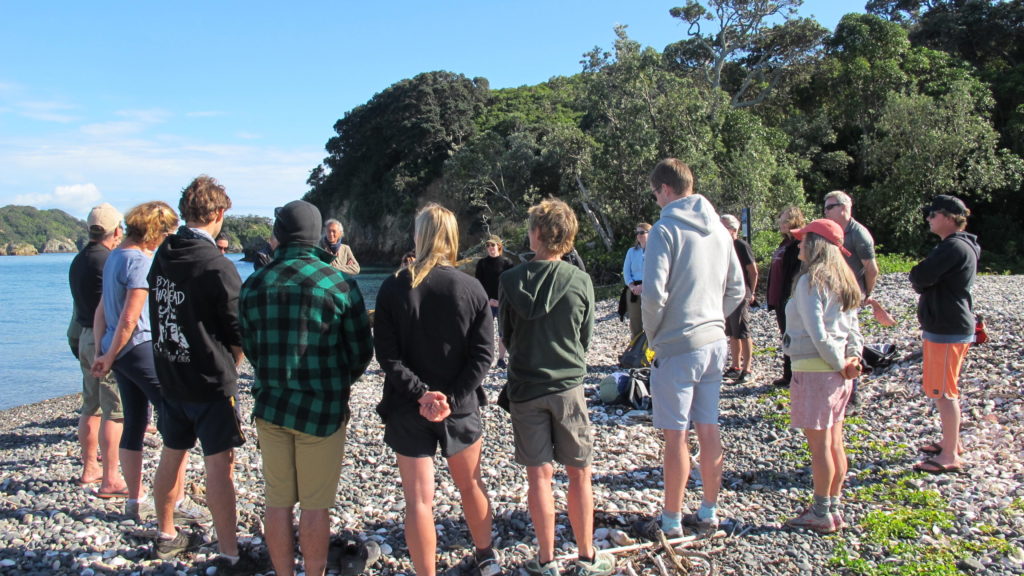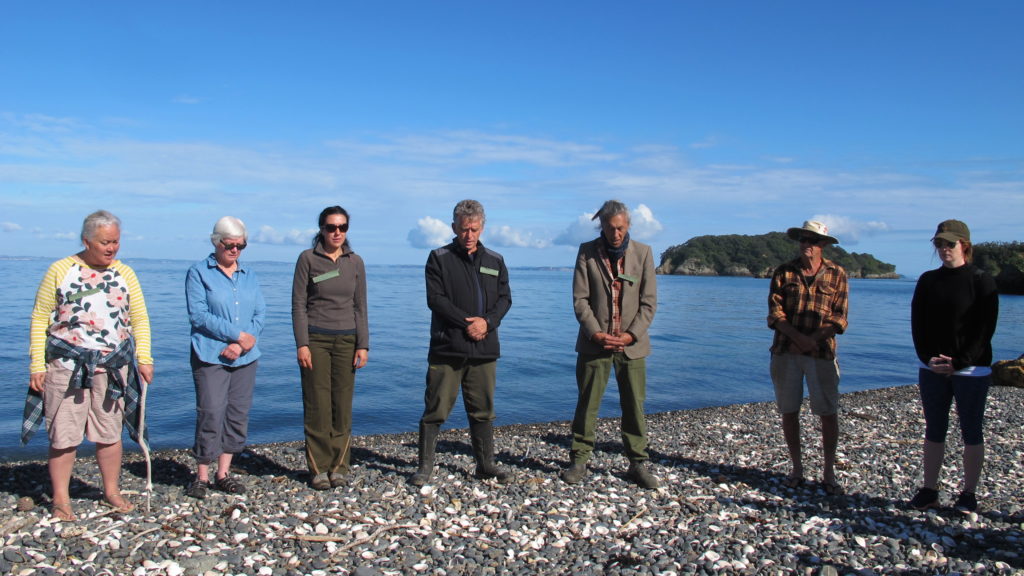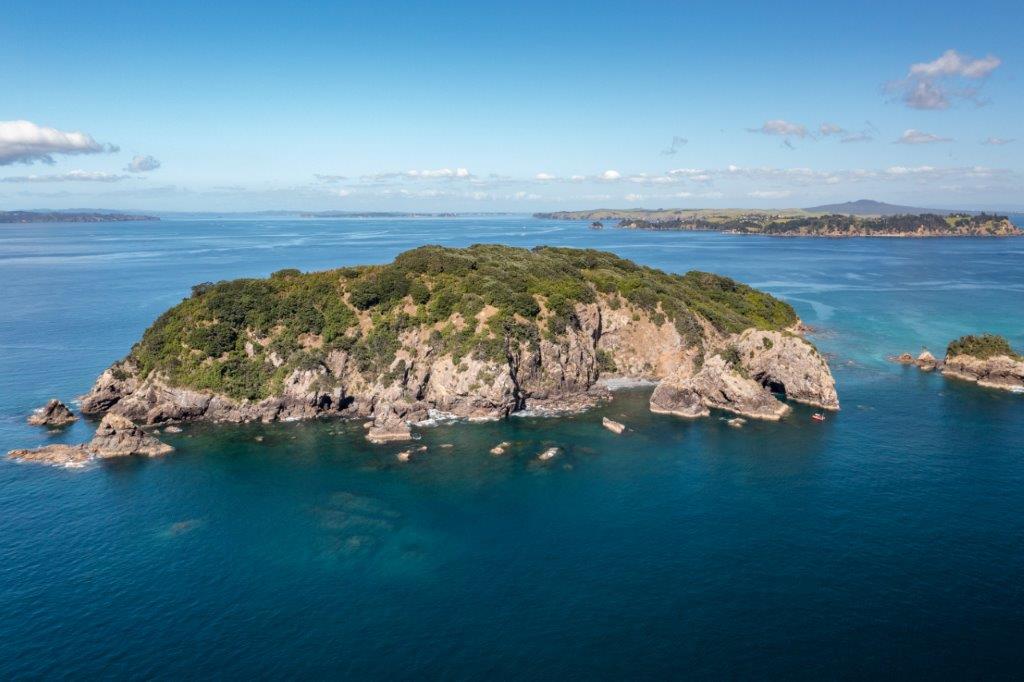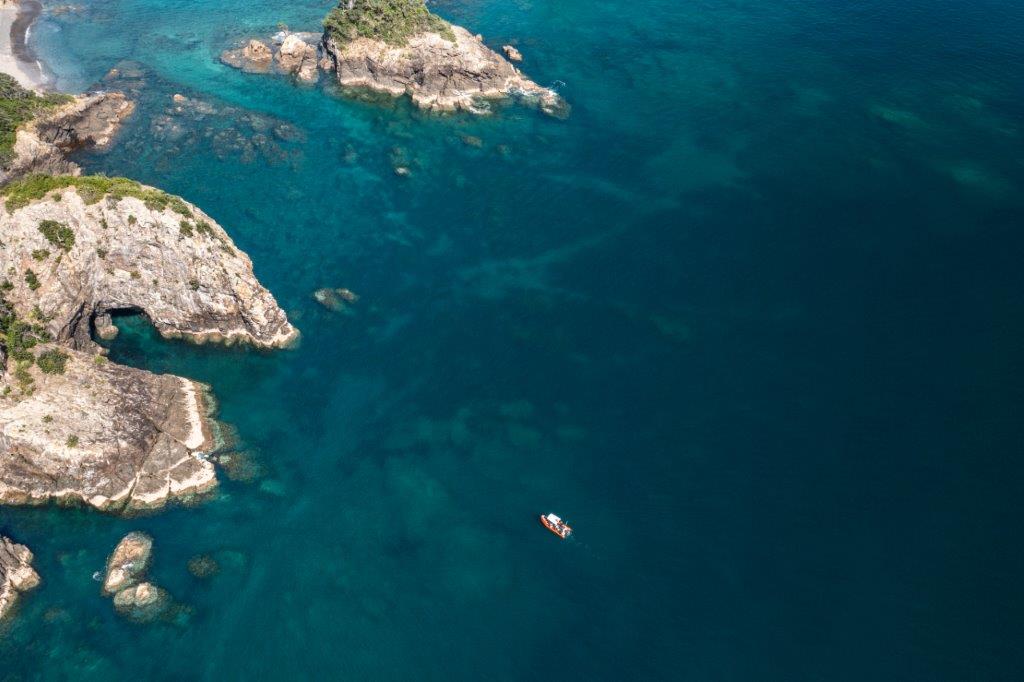The Noises hold a very special interest for seabird lovers. Being home to at least…
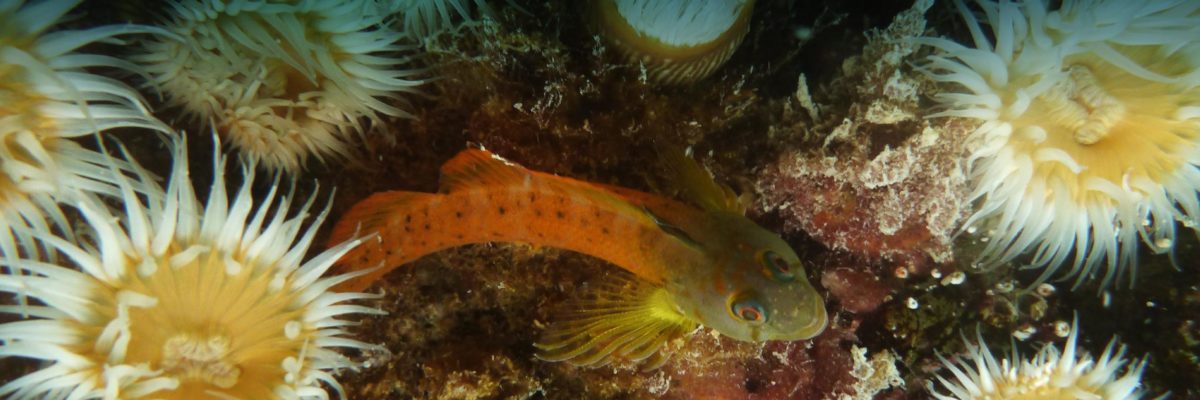
The Privilege and Responsibility of The Noises Marine Restoration Project
We need to talk about our project.
And to do so, we need to first talk about Sea Change. Every project has a genesis story, and ours starts with Sea Change.
The development of Sea Change Tai Timu Tai Pari – a marine spatial plan for the Hauraki Gulf / Tīkapa Moana / Te Moananui-ā-toi – was an experience that connected many people. Through this work, the Neureuter family came to realise that the marine degradation they were observing around The Noises was not unique to The Noises, but happening Gulf-wide. The reasons for that degradation – whilst complex – are also pretty simple to explain. We (all of us) have taken too much out. And we’ve put too much harmful stuff in.
The Hauraki Gulf marine environment is under significant stress. It’s an ecosystem in collapse.
The Sea Change plan included a placeholder for a small marine reserve at The Noises, surrounded by a large Ahu Moana – envisaged as a form of iwi and community marine management area.
At the time Sea Change was prepared, there had been limited study of the marine environment around The Noises. The family knew the marine environment was precious but degrading. With an initial grant from G.I.F.T. in 2017, Dr Tim Haggitt of eCoast was commissioned to undertake marine surveys around The Noises.
The marine surveys highlighted the widespread impact of fishing at The Noises on key species, soft sediment and reef ecosystems. Important indicator species like koura/crayfish, tipa/scallops and tāmure/snapper were recorded as rare or small, and kina barrens were recorded as extensive on shallow reefs.
Although the family continued to build relationships and share what they knew, fast forward a few years, we knew that The Noises needed more “umph”.
Establishing a form of marine protection is essential for the recovery of The Noises marine environment and to achieve holistic protection, but implementation is difficult. Creating Ahu Moana for The Noises without a legislative precedent in Aotearoa, and in the Hauraki Gulf where there are multiple iwi interests, is not straightforward.
The shameful truth is that today, Marine Protected Areas make up just 0.4% of New Zealand waters. This is despite the NZ Government’s international commitment to establish no-take reserves in 10% of our waters by 2020. The current legislative tools for marine protection are inadequate. The 50-year-old Marine Reserves Act of 1971 has not kept pace with the relationship developments and expectations between the Crown and Treaty Partners, and wider society. At the time of publishing this article, in the Hauraki Gulf Marine Park, there are six small marine reserves constituted under the Marine Reserves Act 1971, covering only 0.3% of the Park. Only one of these has been created this century.
The Neureuter family regularly hosts government decision-makers and policy advisors at The Noises to foster a better understanding of the impacts on the marine environment and to foster collaboration. These visits are an opportunity to emphasise that a new path must be forged that provides for appropriate cultural recognition and co-governance for marine protection and management in New Zealand, that recognises the importance of holistic ecosystem-based management.
In late 2019, The Noises Trust, entered into a partnership with Tāmaki Paenga Hira Auckland Museum and the University of Auckland. This team is working actively and urgently to identify solutions to and overcome current barriers for marine protection in New Zealand using The Noises as an example.
The ambition for The Noises is bold: to enable restoration and regeneration of the marine environment surrounding The Noises islands, to deliver holistic protection of the land and the sea.
Put simply, inspired by the vision of Sea Change, we see this work being about the revitalisation of mauri. This is our kaupapa. Our project team wants to see and feel recovery.
Our mahi will contribute to the Hauraki Gulf Forum’s goals for the Marine Park, having at least 30% marine protection and 1,000 sqkm of shellfish bed and reef restoration.
There are three main strands to our work: Māori/iwi relationships; building science and knowledge; and government relationships and advocacy.
Critical to success is developing trusting relationships with Mana Whenua and local iwi who identify with and to the islands. The largest island in the group, Ōtata, contains a substantial midden. Auckland Museum, in collaboration with the Neureuter family and iwi, has now led two archaeology excavations of the midden. The results will provide a baseline for understanding the changing marine environment around The Noises and a valuable comparison for modern surveys. The information will also provide scientific evidence that supports the knowledge iwi hold about their occupation heritage and their tupuna in the Hauraki Gulf.
We are fortunate to work with a small group of iwi advisors who coalesce around the kaupapa and guide our path.
This year, Dr Tim Haggitt has conducted further marine surveys around The Noises, through which a marine biodiversity dataset for The Noises is being built. Auckland Museum, which has research connections to The Noises dating back to the 1930s, has developed an ecological monitoring framework and a 50-year monitoring programme to track biodiversity and ecological changes at The Noises in the terrestrial and marine environments. This work provides a holistic approach to document the degradation and importantly guide a restoration programme.
The aims of this work also include developing tohu/indicators of change expressed in a Mātauranga Māori framework. Guided by Dr Dan Hikuroa, we are working alongside iwi and the Neureuter family who have intimately observed The Noises environment for generations.
Thanks to the University of Auckland, The Noises marine environments are also currently being used as a trial location for active marine regeneration projects (including innovative trials to manage kina barrens to enable ecosystem recovery).
What we’re learning
At the outset, embarking on a project to establish a form of marine protection around the islands seemed like a linear project. But it is far from that. Our work is not linear and we have to be flexible, patient, nimble, and adaptive.
Our work will demonstrate the interconnectedness of ecosystems. However, for our example to count, this principle of ecosystem-based management must extend to recreational and commercial fisheries management and environmental management more broadly. This is particularly imperative as we’re faced with a wider set of issues and challenges such as climate change, and the impacts of growth and development as is well documented by the Hauraki Gulf Forum’s State of the Gulf reporting.
We’ve realised that alongside many others, we are beating the drums for systemic change in Aotearoa New Zealand. We alone cannot achieve our endeavours. Strong networks and transparent information sharing are critical. Although it’s difficult to quantify, we know that our work and the way we’re working is having a ripple effect throughout the Hauraki Gulf Marine Park, just as are we beneficiaries of ripples created by others. The momentum for change is building and the level of understanding feels like it’s beginning to shift rapidly.
We’ve learned that we must build the political will for change, as well as build the stakeholder support to influence political will.
Finally, and most importantly, we’ve learned that embracing indigenous knowledge and building respectful and reciprocal relationships with Māori affords a window into a different and incredibly valuable worldview. Māori believe there is a deep kinship between humans and the natural world. All life is connected. People are not superior to the natural order; they are part of it. We have learned kaitiakitanga means guardianship, responsibility, protection, and preservation. Based on a Māori worldview, our wellbeing is linked to the wellbeing of the natural world.
Alongside this worldview, we’re charting new territory for a modern form of holistic protection. We’re constantly learning. It’s both a privilege and an enormous responsibility.
All our work has been generously enabled by G.I.F.T., PEW Bertarelli Oceans Legacy, The Auckland Museum, The University of Auckland and C&L Gregory Trust. These funding and research partners believe in the kaupapa, and The Noises Trust will forever be grateful for these high-trust relationships, expertise, and support.

